November 1st 2021 – A reflection from Andy Weekes
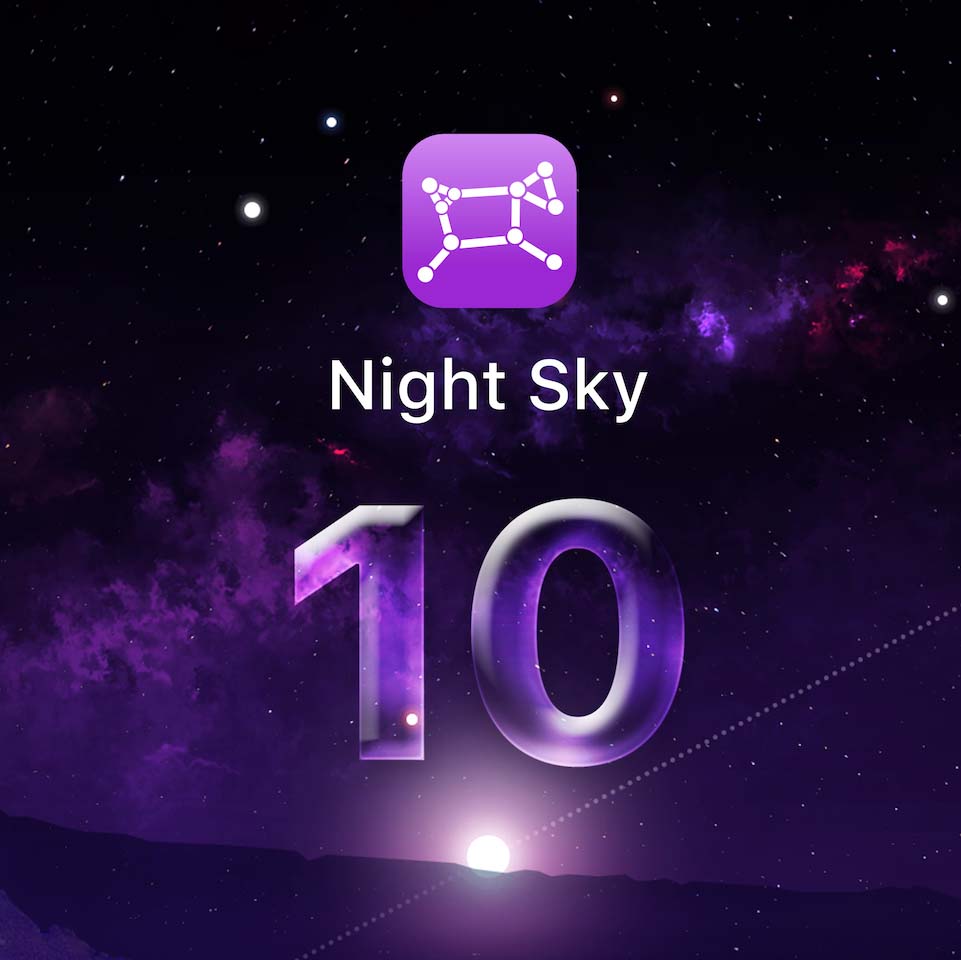 Today marks the 10th anniversary to the day of when Night Sky was launched on the App Store!
Today marks the 10th anniversary to the day of when Night Sky was launched on the App Store!
Looking back, this was the start of a journey that I could never have imagined, leading from a small app put together as the result of a hobby, to 10 years later, being the most popular astronomy app in the world!
I wanted to take this opportunity to reflect on some of the work over the years starting from the first version of Night Sky, through to our latest release, Night Sky X, and highlight some of the achievements of the app and the team during this time.
Night Sky (Version 1) (2011)
On November 1st 2011 the original Night Sky app was launched. It utilized the GPS, magnometer and accelerometer on iPhones and iPads to enable users to simply hold their device to the sky to identify stars, planets, constellations and satellites. This was the core functionality of the app and as this type of application was just being discovered, it really was a truly magical experience, to simply hold something to the sky and have it identify what you were looking at.
As Night Sky became more popular, we invested more of our time in the app and brought many updates, notably this was where we included the first Sky Information Pack, so users could tap the objects and then get information on them.
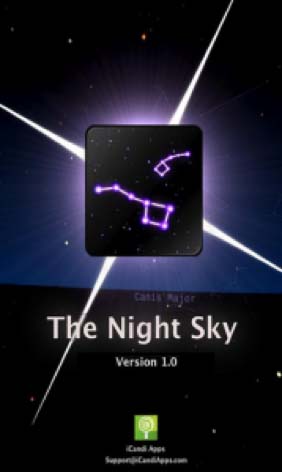

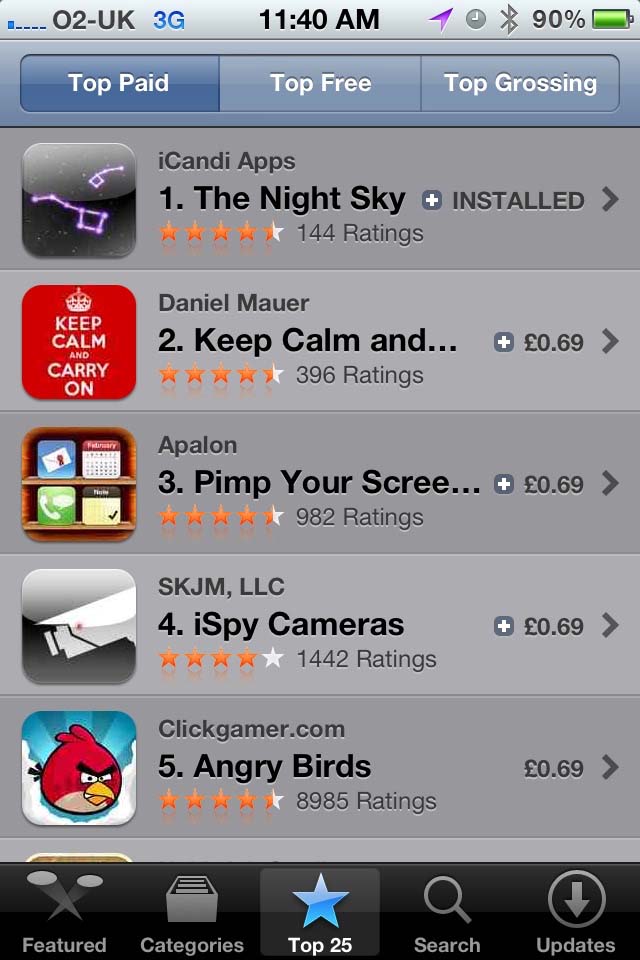
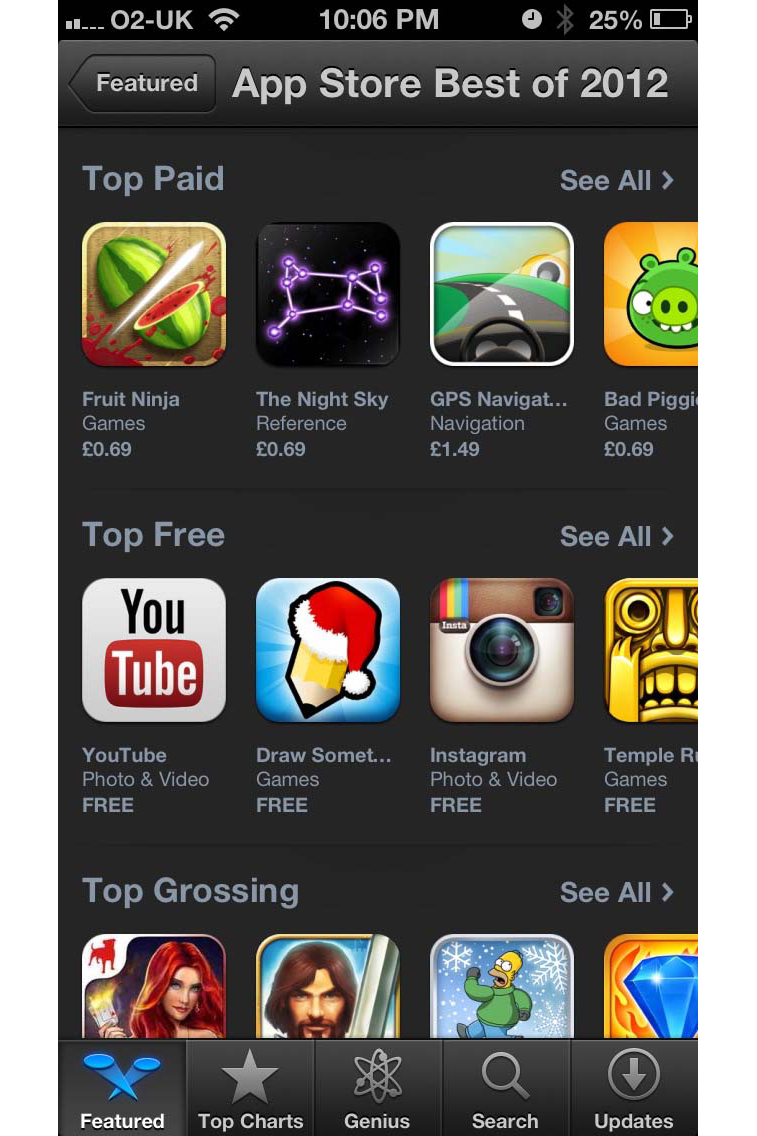
Night Sky 2 (2013)
In 2013 we launched Night Sky 2. Night Sky 2 had a complete design change with a green theme, but more importantly focussed on bringing live stargazing and community features to Night Sky. We were the first stargazing app to bring localized stargazing information to you, and supply push notifications on stargazing conditions for the night ahead. Night Sky Community also made its debut in Night Sky 2 bringing thousands of stargazing sites and localized light pollution mapping to users worldwide.
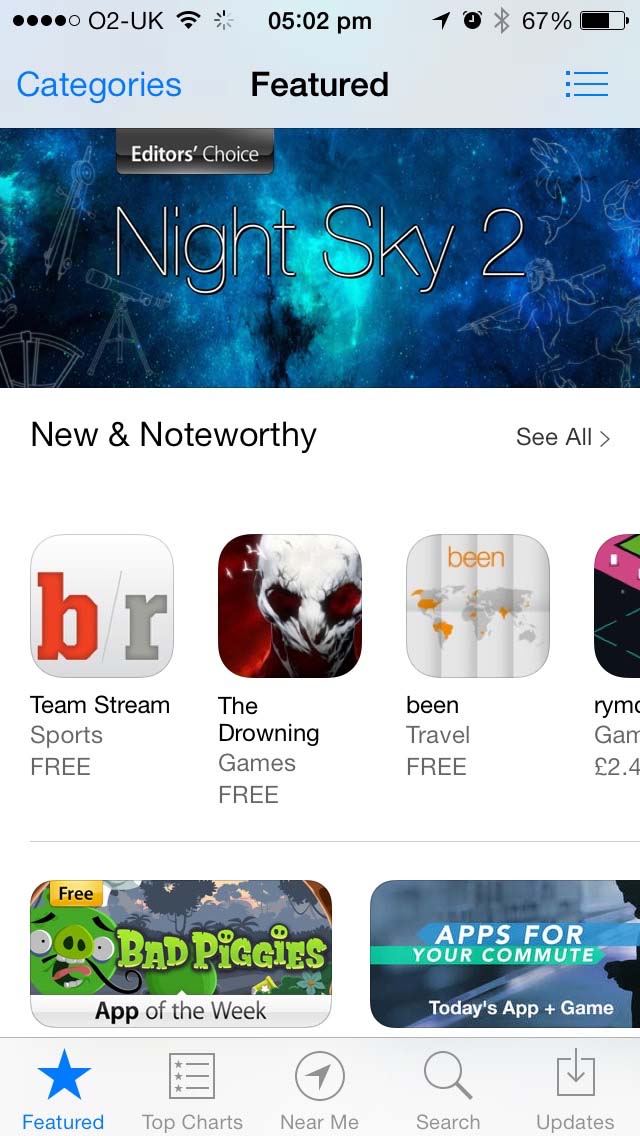

Night Sky Pro (version 3) (2014)
In 2014 we launched Night Sky Pro which was actually our version 3 offering. Night Sky Pro built further on advancements we brought to users in Night Sky 2. We introduced Night Sky Time Machine to travel forwards or backwards in time, our light spectrum array selector opening up visual parts of the Night Sky you had never seen before, and also included additional features such as world traveller mode enabling users to travel to any part of the world to view the sky from that location, and a new latest news section.
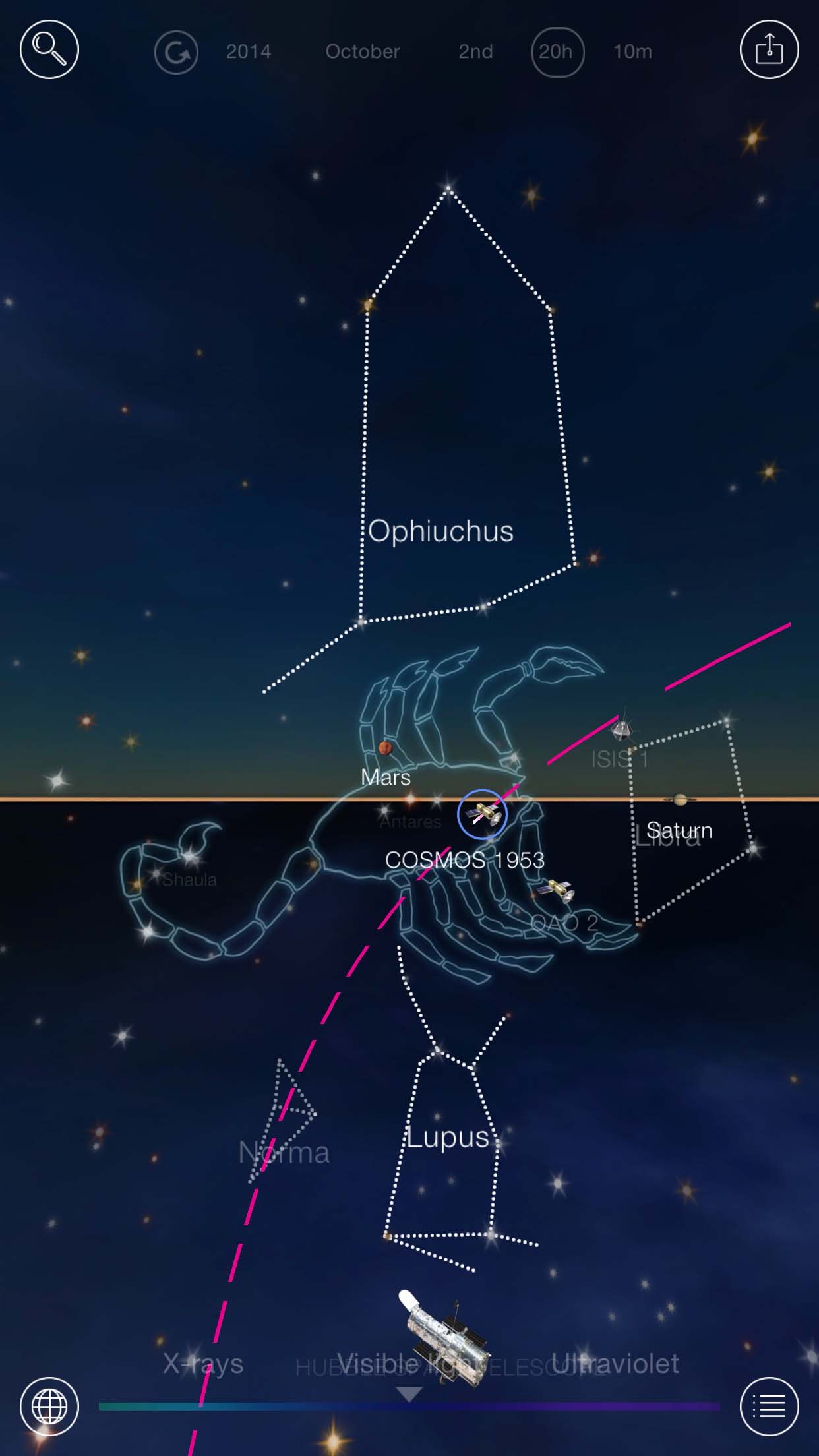
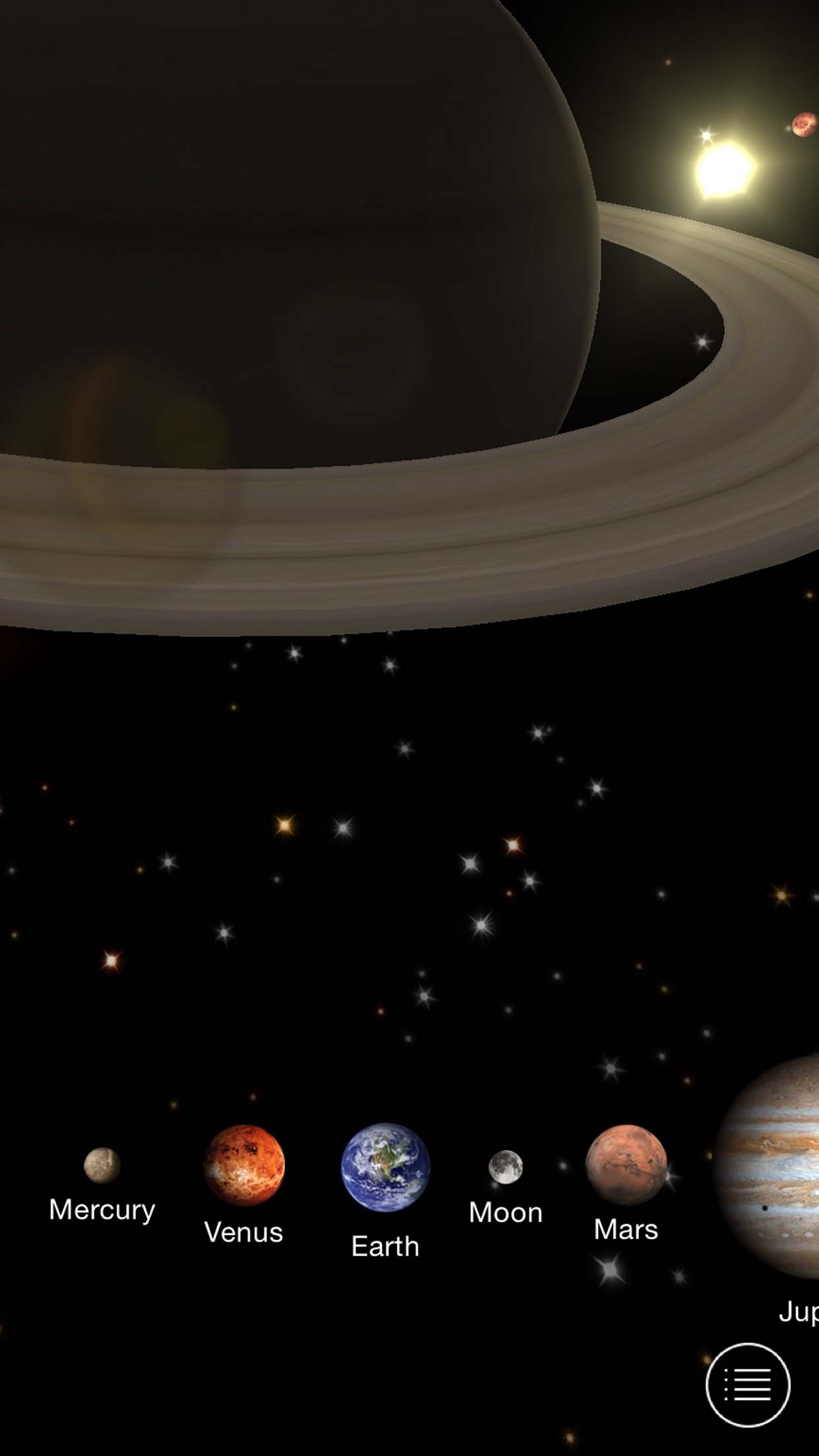

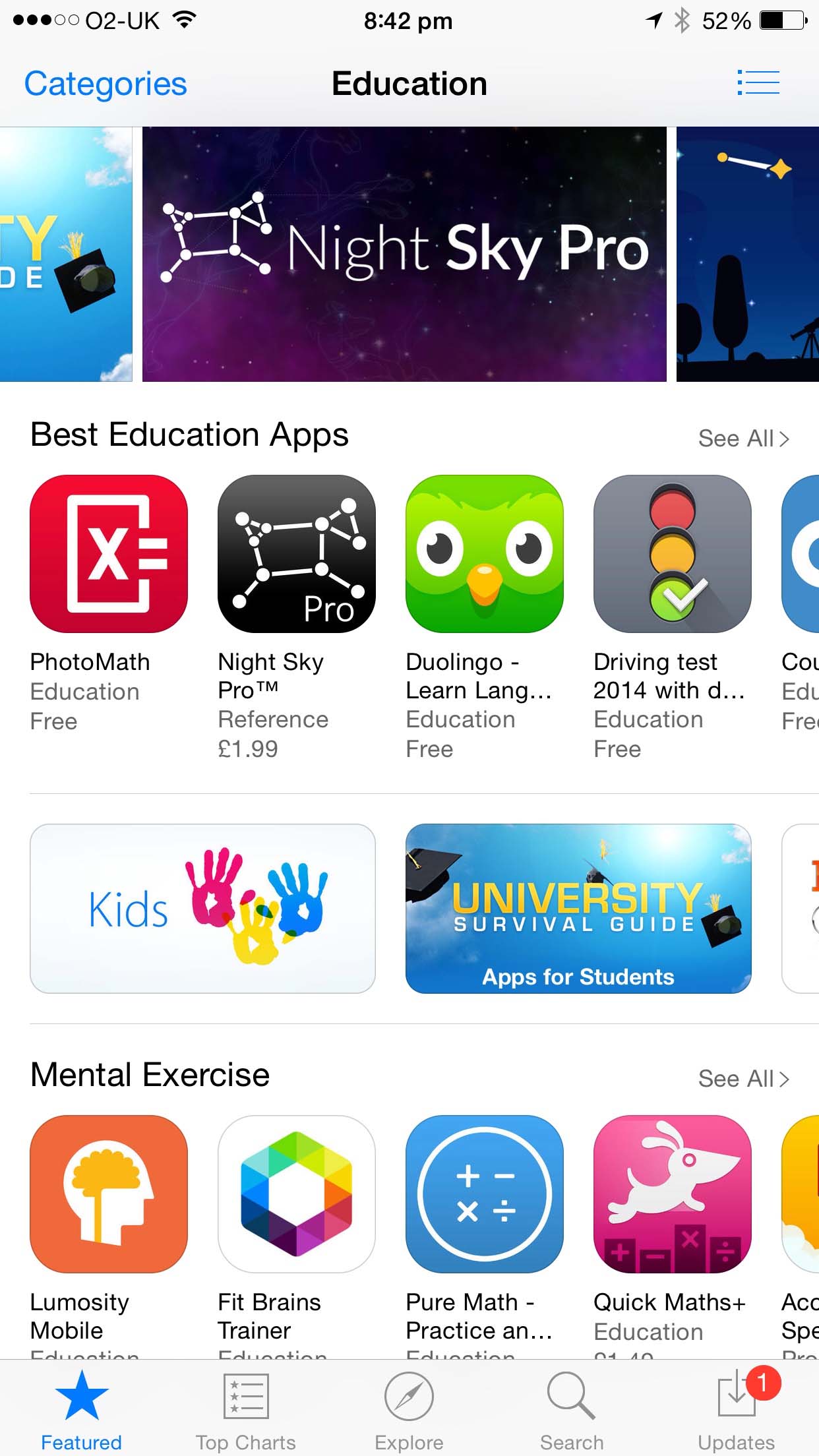
Night Sky MiniScope, Night Sky on Apple Watch and Night Sky on Apple TV (2015)
In 2015 we introduced our first piece of hardware to the world – Night Sky MiniScope. Night Sky MiniScope was a beautiful small telescope, small enough to take anywhere and designed to attach to your iPhone. Used in conjunction with the Night Sky apps it enabled you to take great photos of objects in the Night Sky revealing detail such as craters on the Moon, and astrophotography features such as star trails. This was a massive step for iCandi Apps bringing logistics of physical hardware delivery to the world and led us into new adventures such as designing beautiful packaging, and marketing a physical product whilst developing software to work in harmony with the MiniScope.
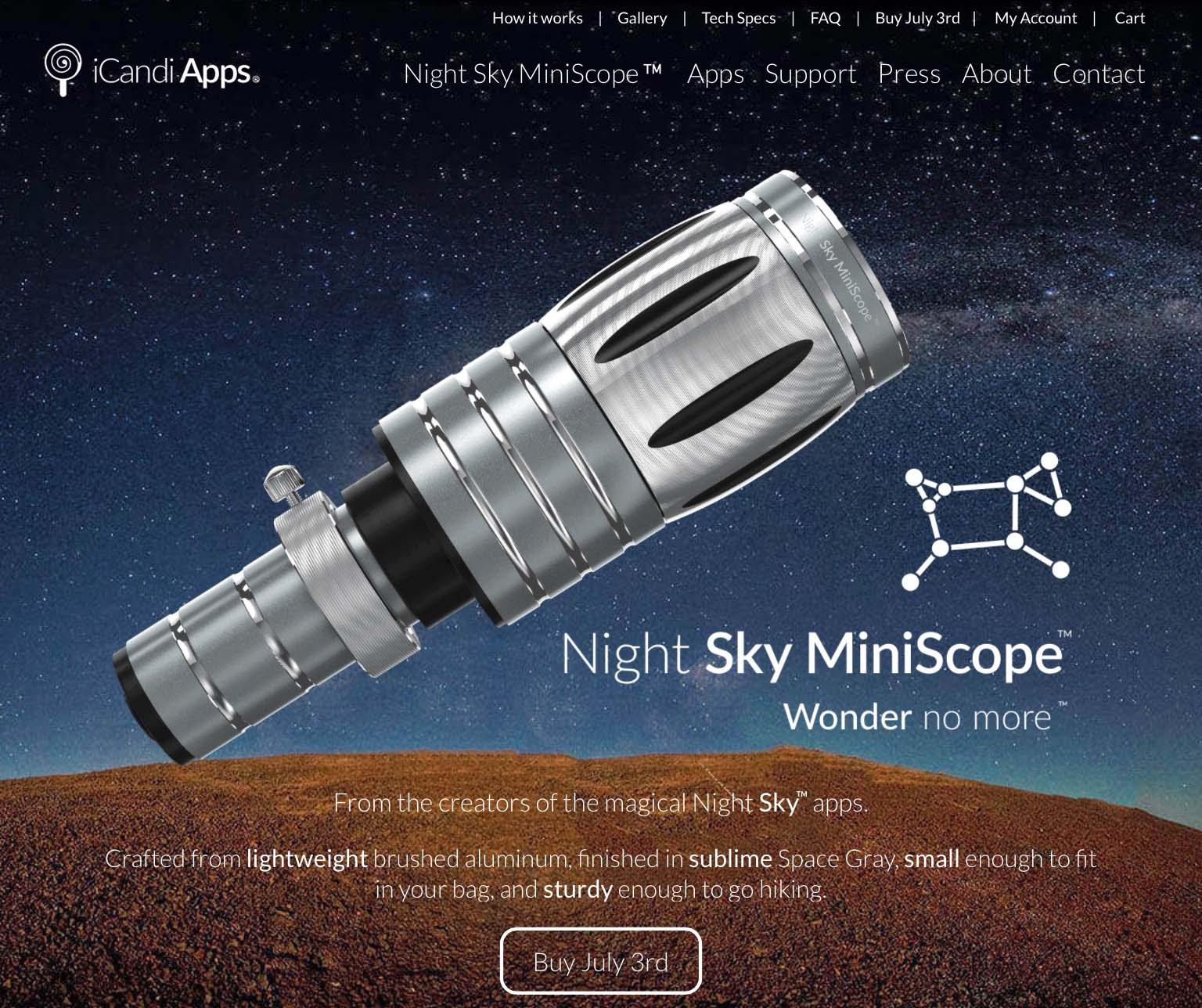
2015 also saw the year we brought Night Sky to Apple Watch on Apple Watch launch day. Providing our most personal experience of Night Sky to users. We also brought Night Sky to the big screen in 2015 on Apple TV, creating the perfect way to share the magic of the sky with friends and family from the comfort of your living room, also a great educational application for the classroom.

Night Sky on macOS and Night Sky 4 (2016)
2016 kicked off with us releasing a refresh of Night Sky on macOS in January. We brought all of the features from Night Sky version 3 to the desktop, making a really convenient way to study the Night Sky, particularly useful for research projects.
The big change in 2016 was Night Sky 4. Night Sky 4 was not only a huge leap forward in innovation and technology, it was also a huge leap forward for iCandi Apps. We completely rewrote Night Sky 4 from the ground up in Metal, enabling us to create beautiful Glass Constellations and add more than 115000 additional objects to the Sky View. We also did our own independent research and created a first – Moon Tours. Moon Tours allows you to land on the Moon and explore sites of interest as if you were there today something not done before. It also brought magic to our Apple Watch app. watchOS 3 enabled us to create the live Sky View on the Apple Watch for the first time, bringing the WOW factor users experienced back in 2011 on iOS, back to the most convenient device for it yet – Apple Watch. This saw Night Sky 4 featured in the September 2016 Apple Keynote live in San Francisco, a great honour for our app and our company.
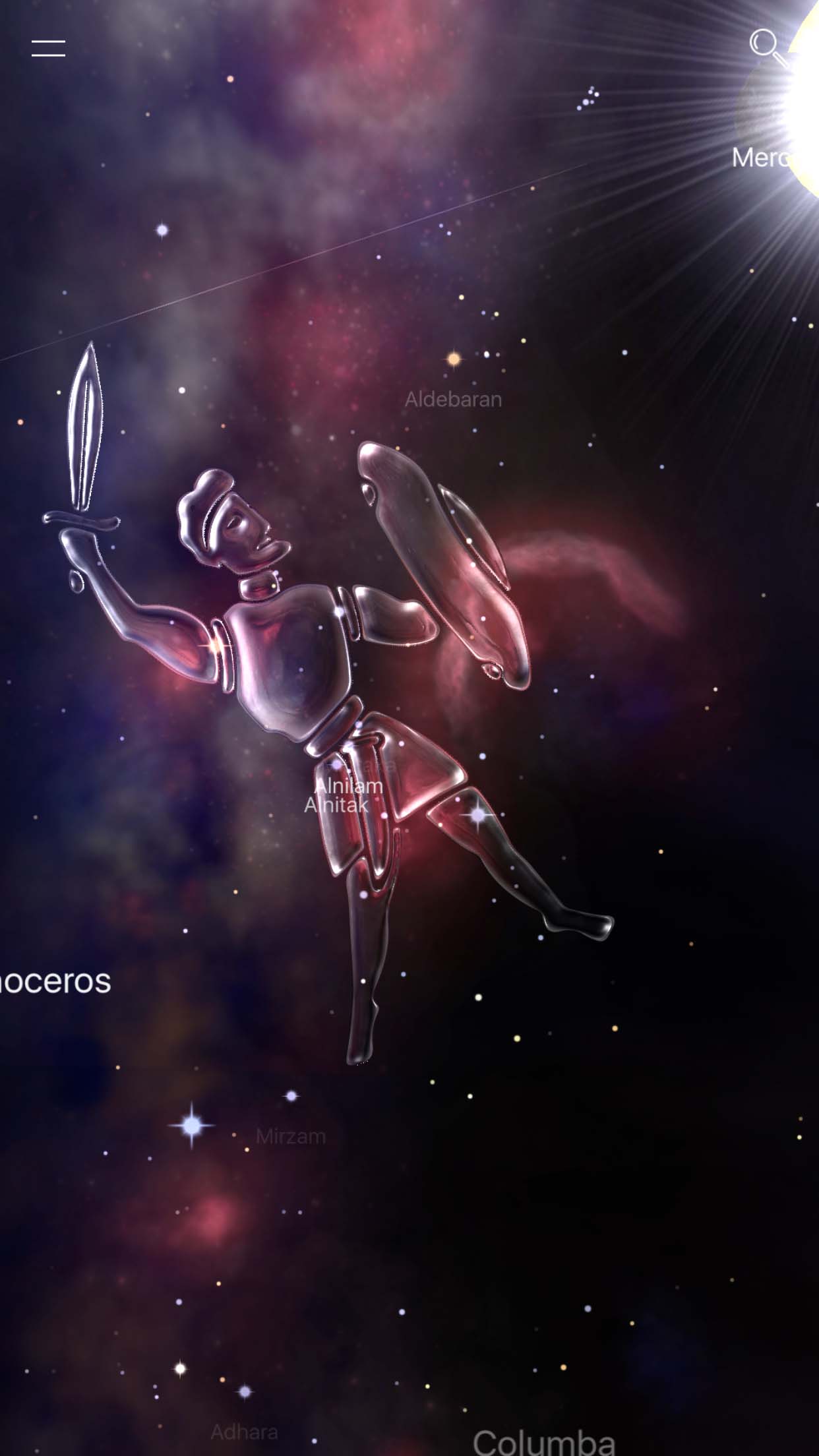
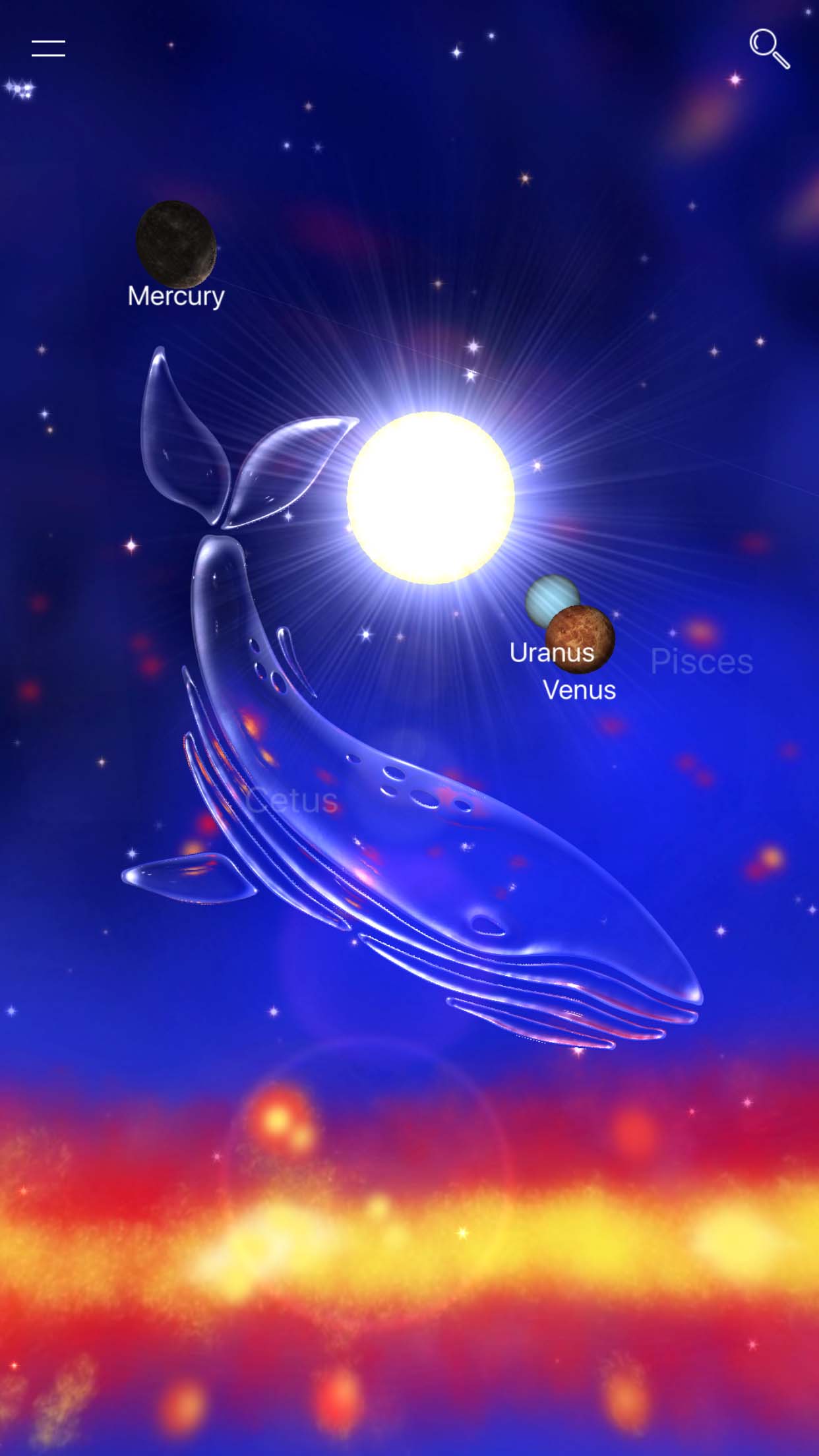

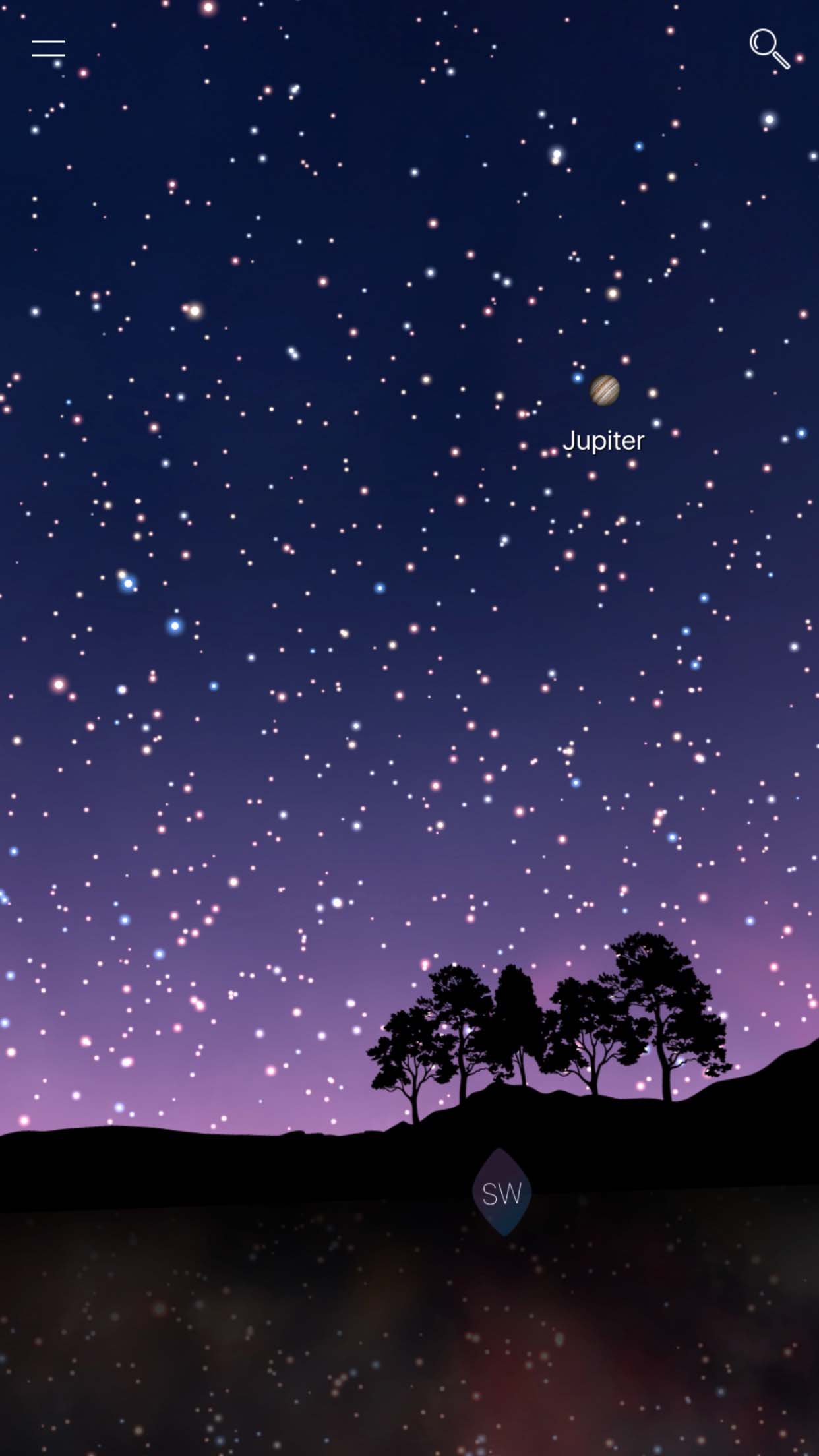

Night Sky 5 (2017)
Night Sky 5 saw us start to introduce more immersive augmented reality experiences due to the introduction of new technologies such as ARKit. Night Sky 5 introduced the AR Grand Orrery, an interactive model of the Solar System, and also integrated the Sky Tours from Apple TV, enabling users to get a tour of the sky for any location in the world. We also adapted the Sky Tours function to enable Live Sky Tours, where Night Sky would generate an immediate tour for the sky above you in the moment.
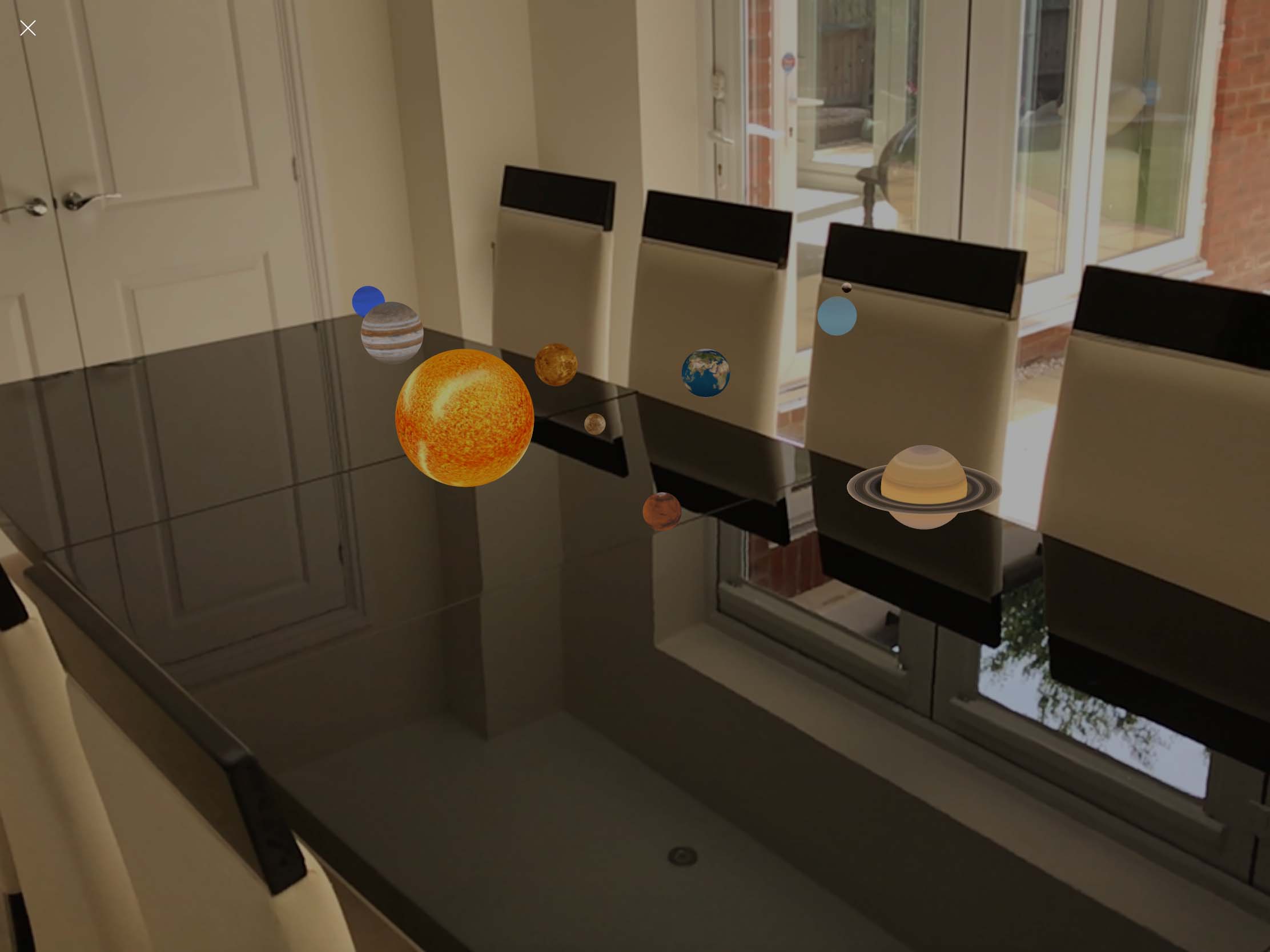
In early 2018, we then introduced an immersive new experience to Night Sky in the 5.5 update called AR Sky Blending. AR Sky Blending intelligently placed the sky map into the view via the camera on iPhone or iPad, and placed it behind objects in the foreground, detecting obstacles such as buildings, trees or clouds to create a new level of AR immersion.
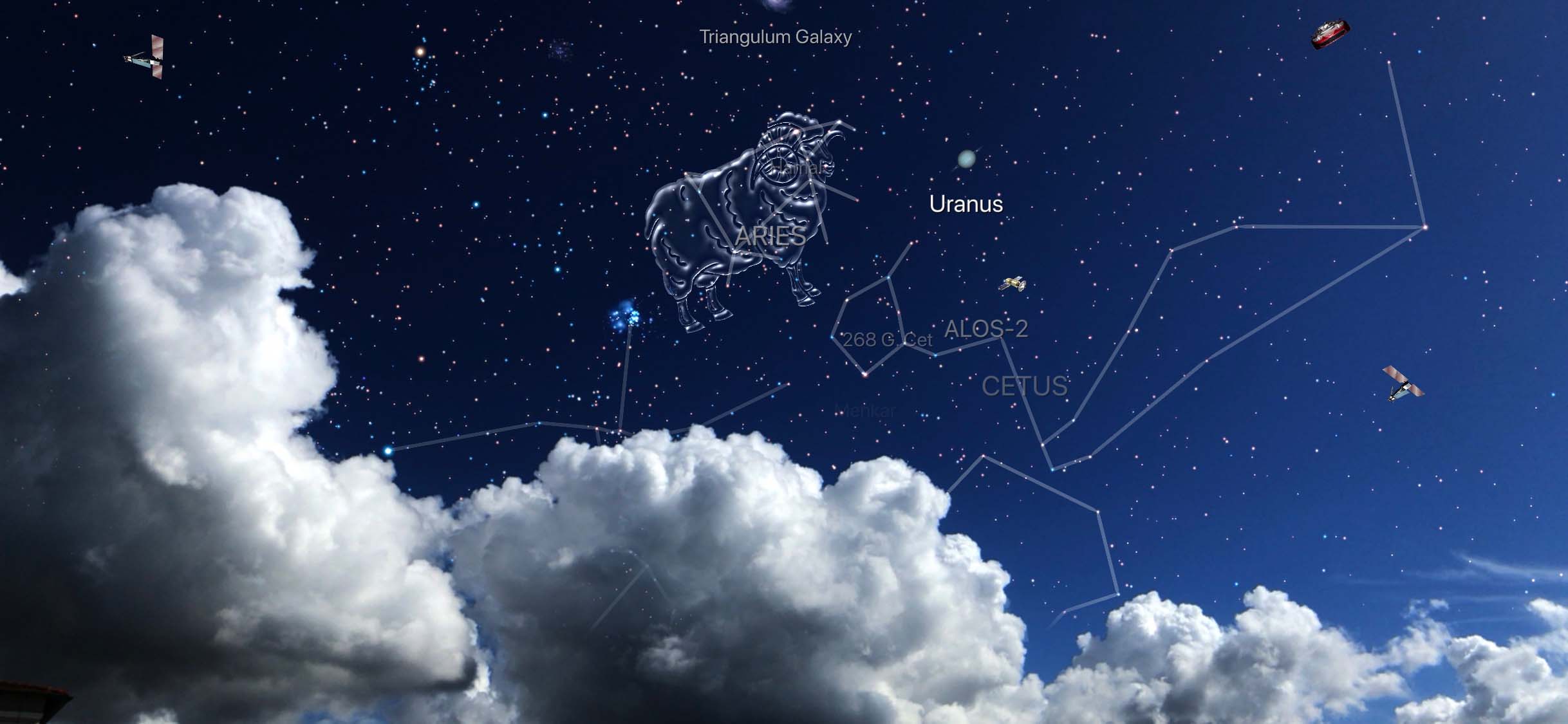
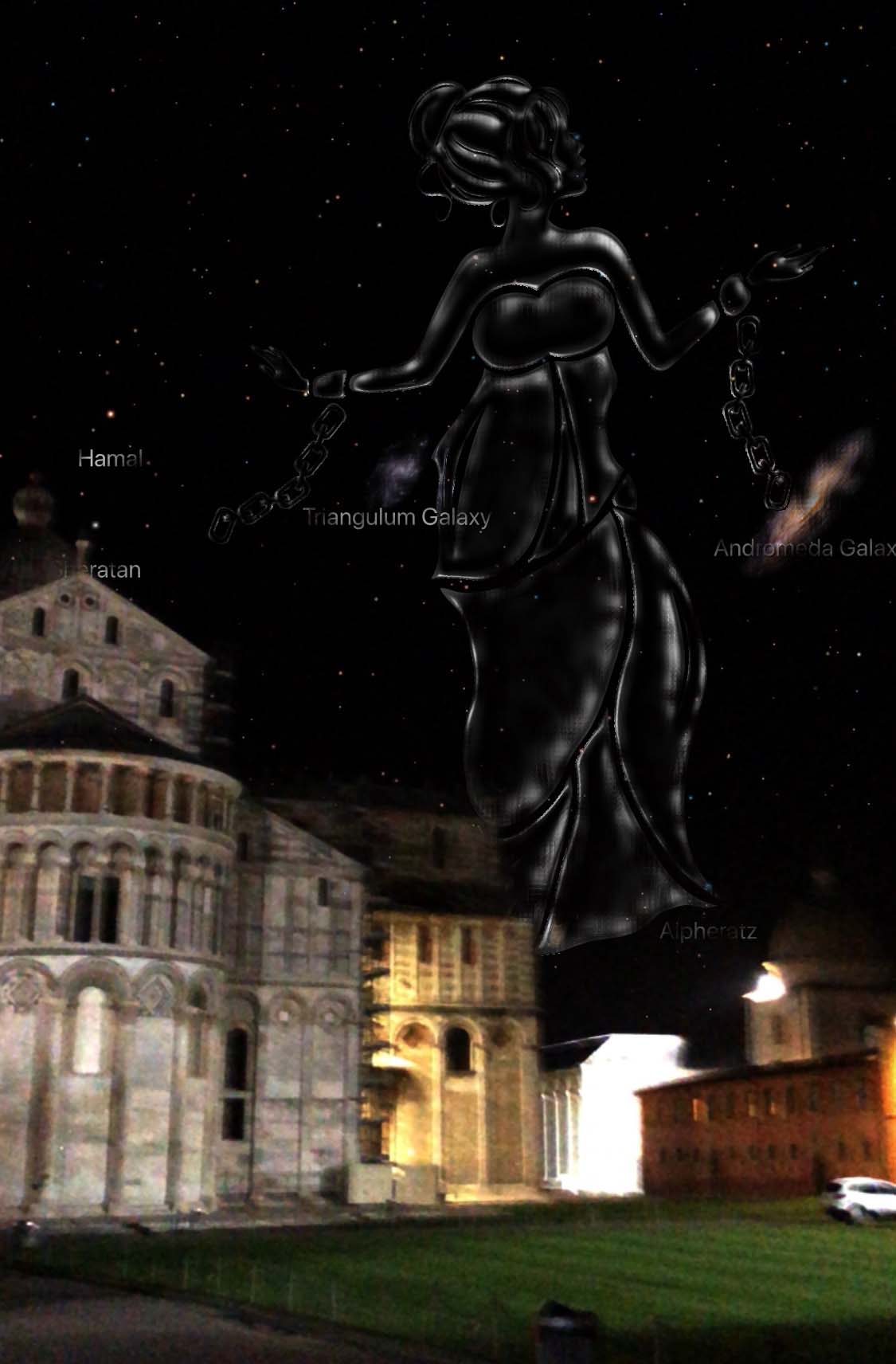
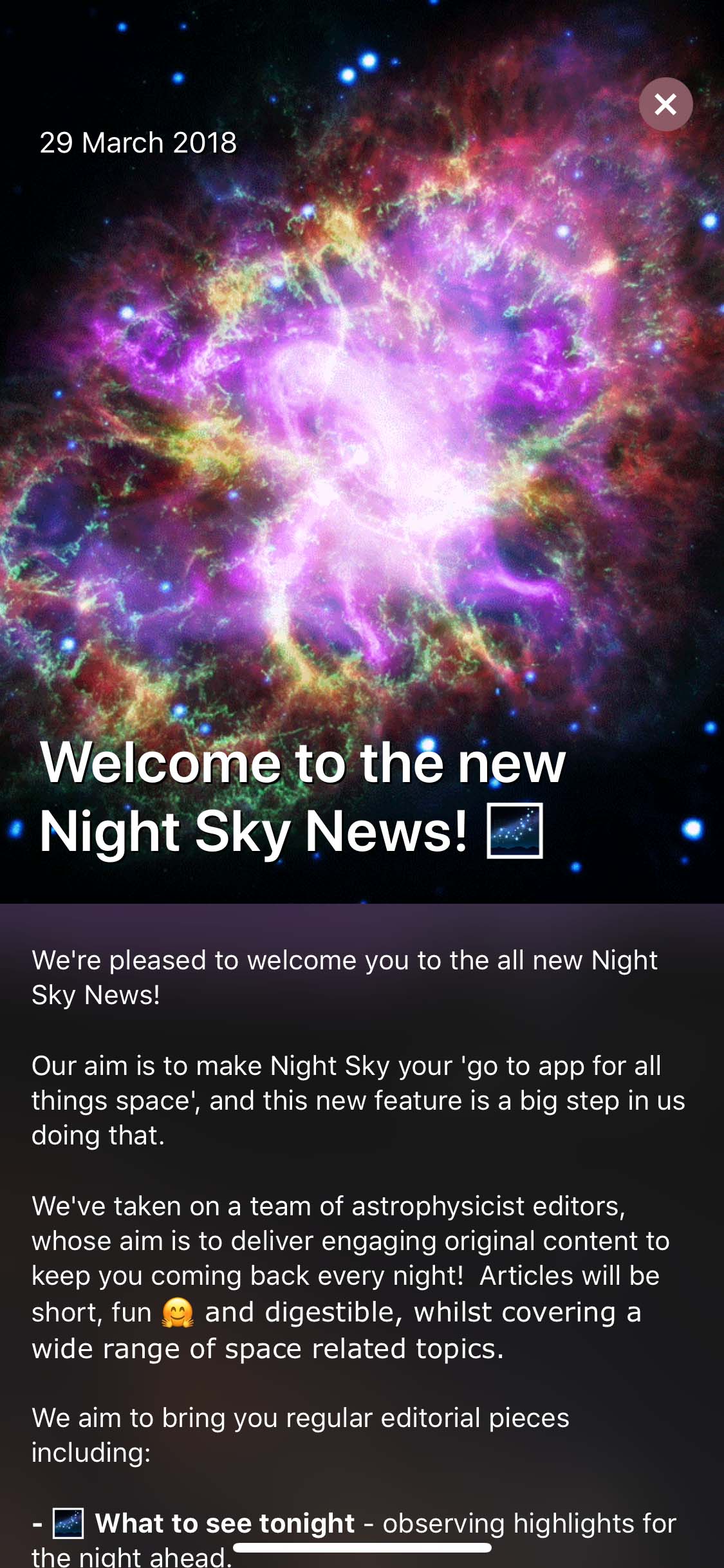
Night Sky 6 (2018)
Night Sky 6 continued to build on immersive AR experiences thanks to improvements in ARKit technologies, gradually merging AR models into the existing Sky View, enabling users to essentially pull objects out of the sky to view them in detail in front of them in their classroom or home. We used this opportunity to not only pull planets and stars out of the sky, but to enable users to pull entire Glass Constellations out of the sky to view their depth structure in 3D or AR.
Night Sky 6 also took AR experiences even further with the introduction of Planetary Portals, enabling users to walk onto the surface of other planets to view the sky as it would look from the surface of that planet.
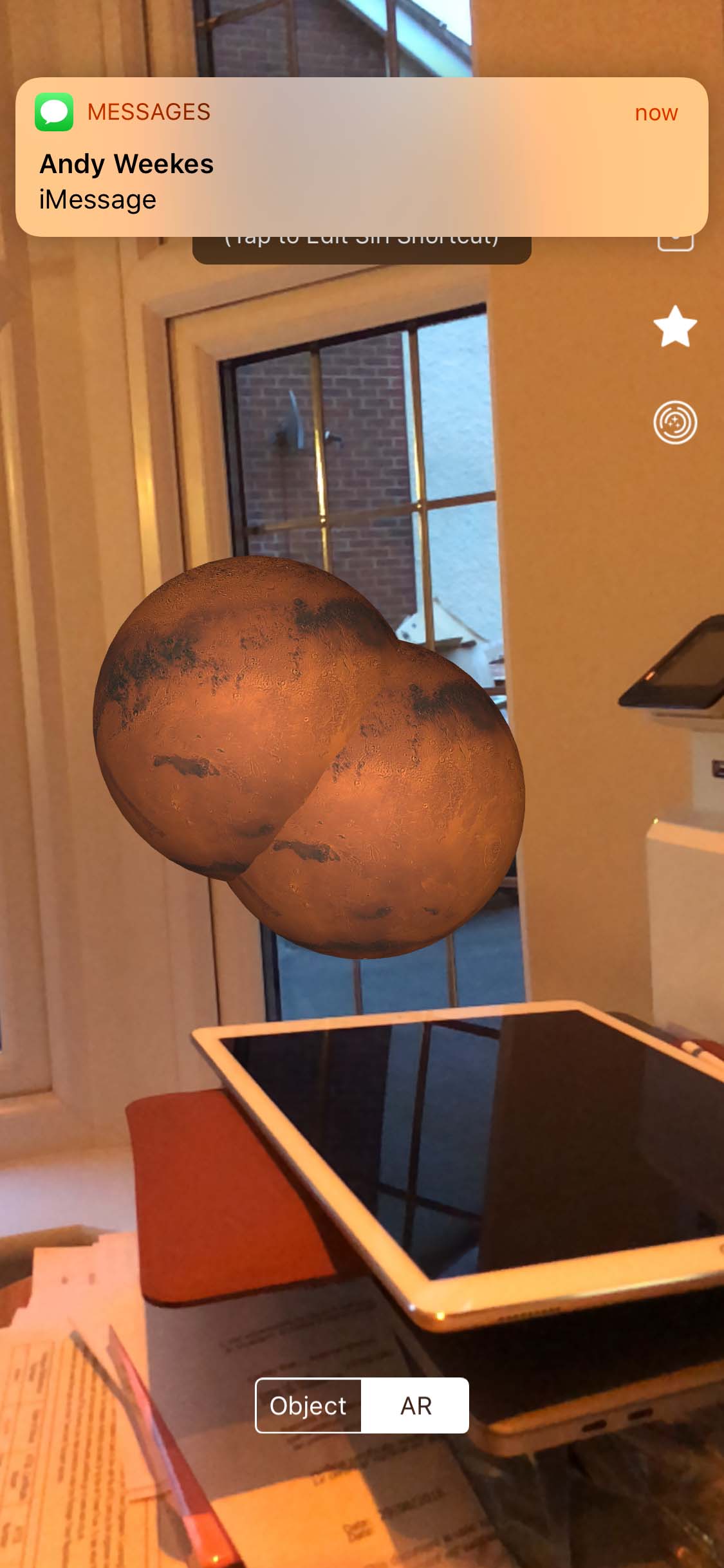
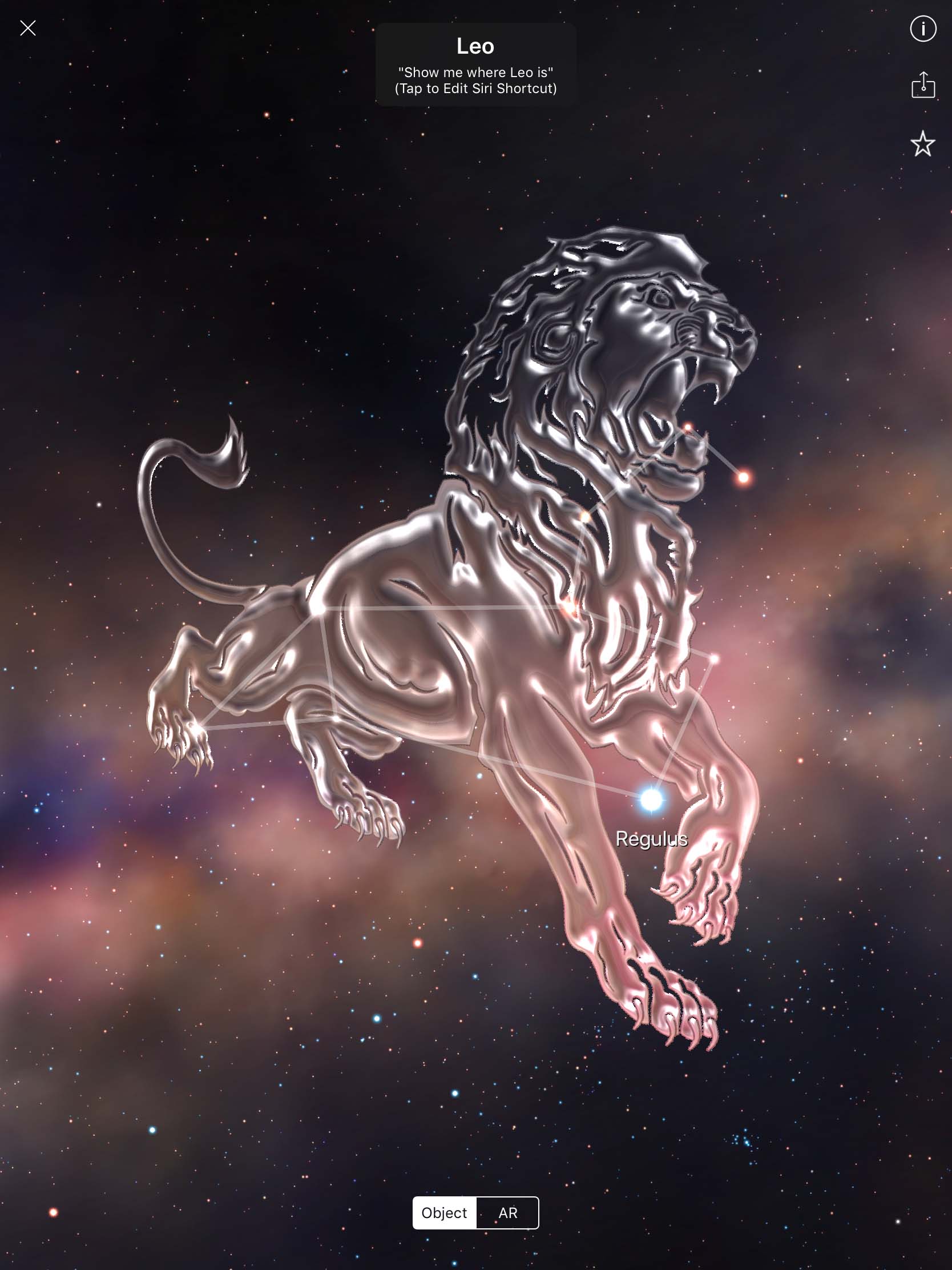
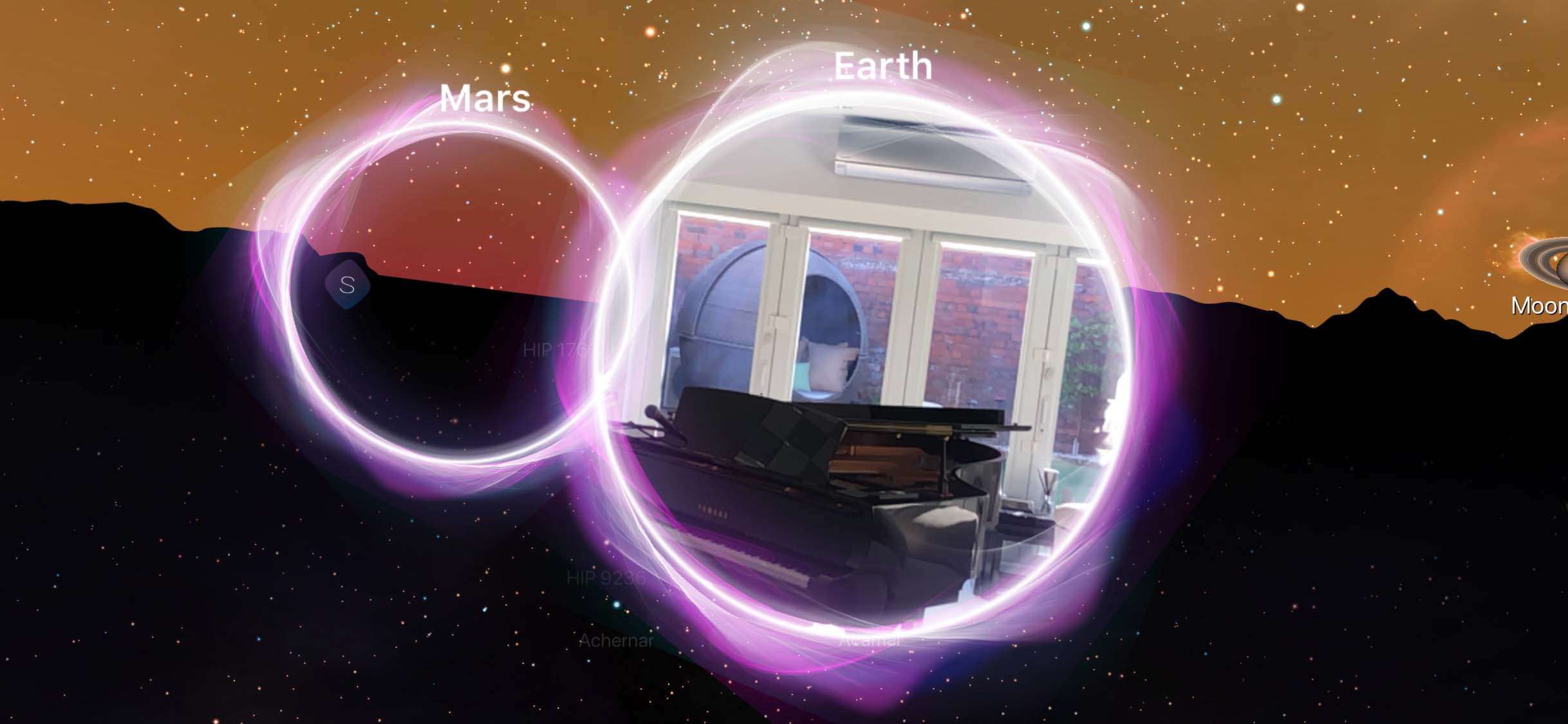
Night Sky 7 (2019)
Night Sky 7 introduced over 60 million more stars to the Sky View enabling user to zoom into space further than ever before in Night Sky! This started to pave the way for the next version of Night Sky, and served as a stepping stone for us to start adding vast amounts of more detail to the Night Sky map (see Night Sky 8).
We also spent a lot of time enhancing the user interface in Night Sky 7, reimagining how users should interact with the search and discovery of other features within the app. We made Night Sky feel more familiar to users by making Search work similarly to other iOS apps.
Other new and useful features debuted in Night Sky 7, including Aurora mapping, showing the probability of being able to view the Aurora dependent on location, inner planet core models, and also Night Sky Mindfulness, a really engaging way to enhance one of the most natural mindful experiences – stargazing.
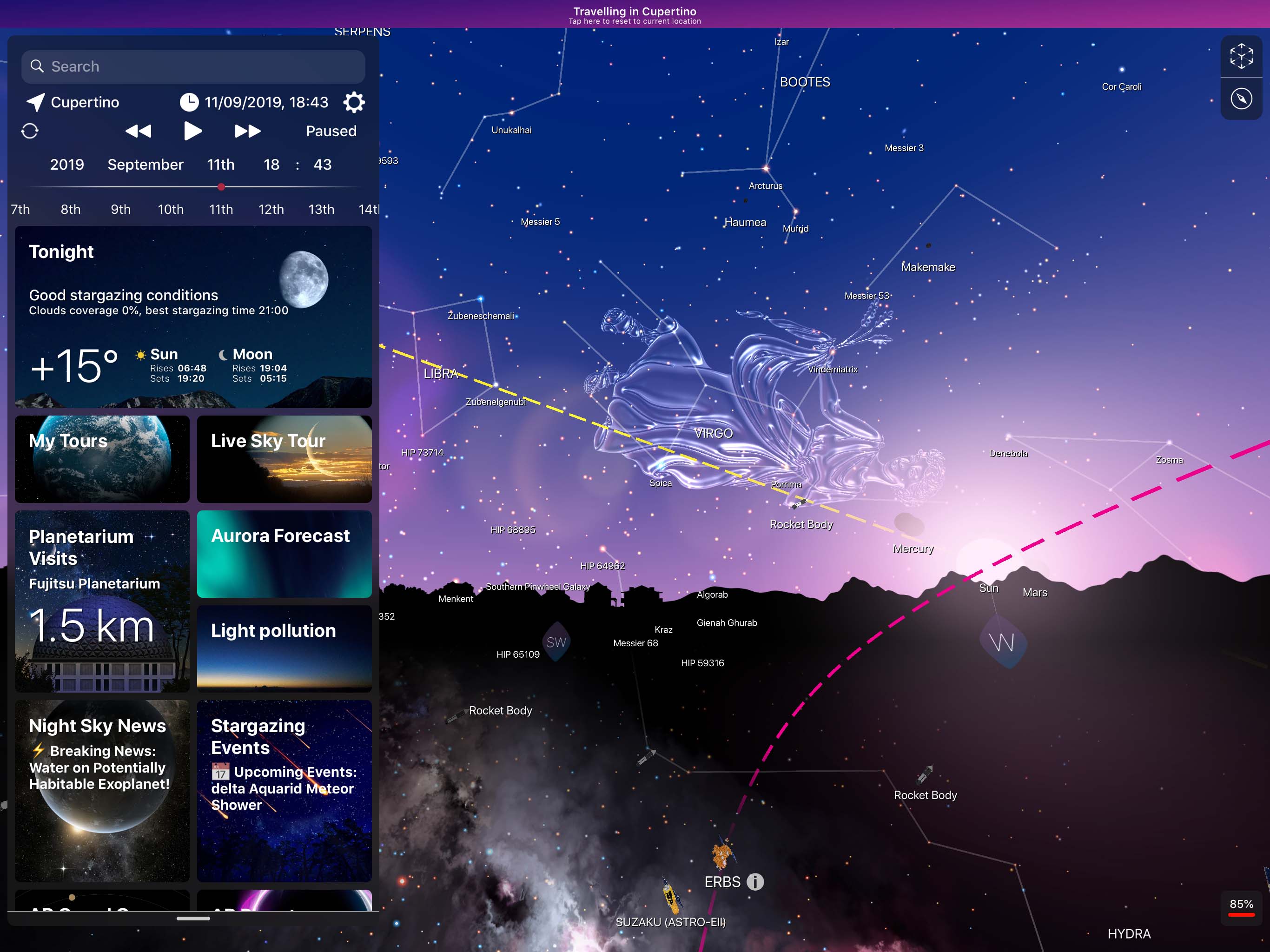
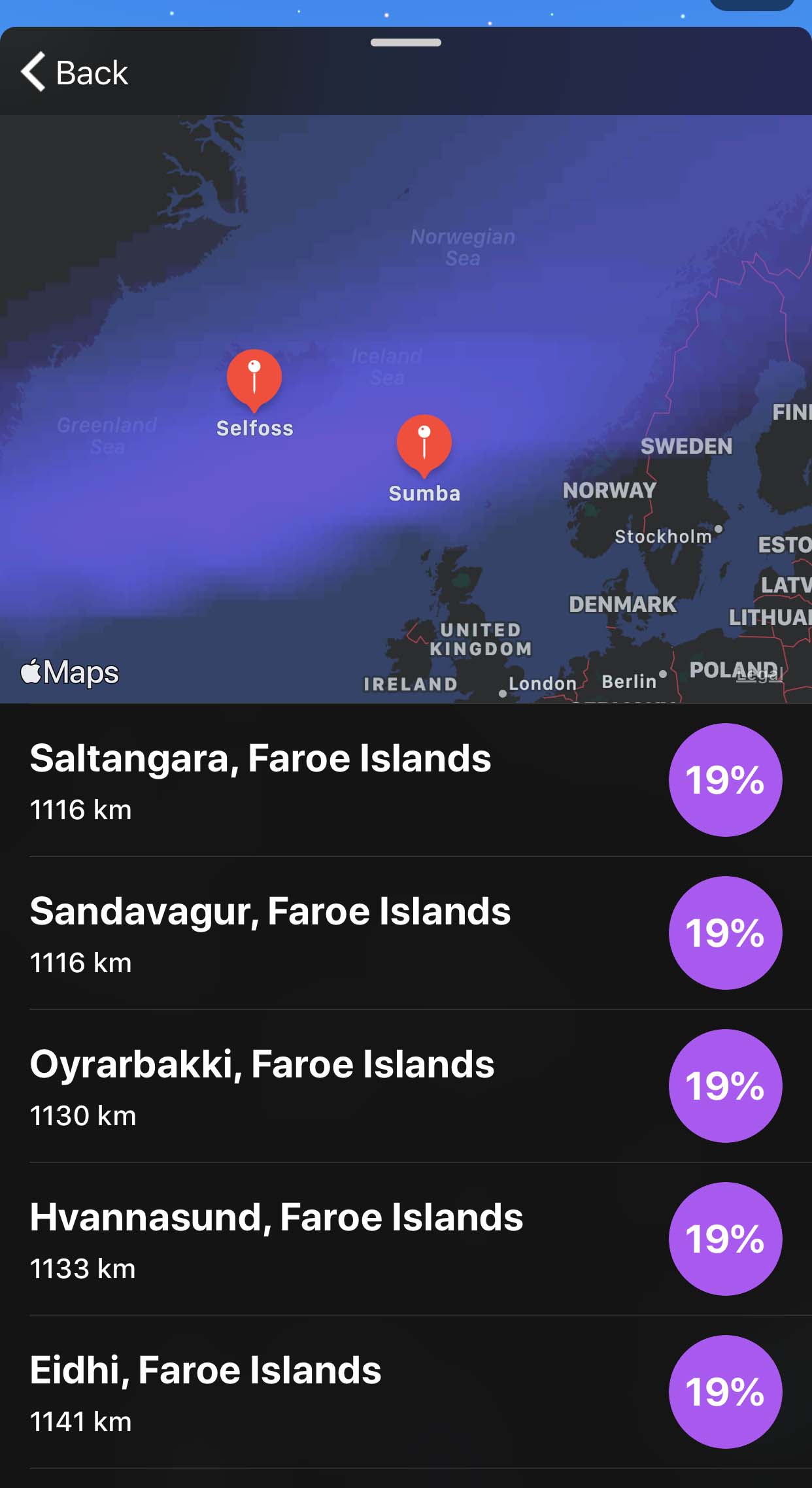
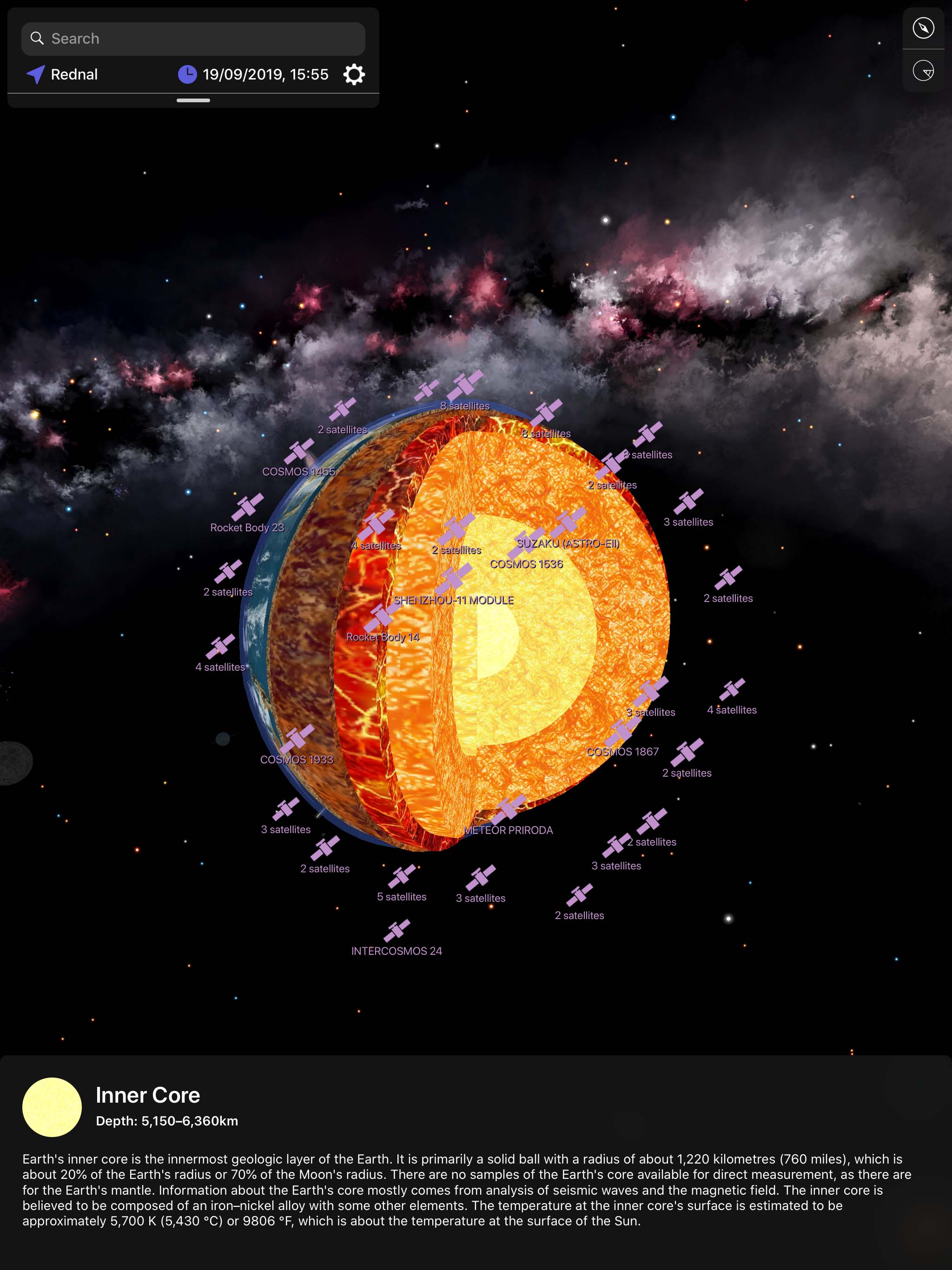
Night Sky Education Centre (2020)
When the global pandemic hit in 2020, we tried to think of ways we could do our bit to help. Night Sky’s role as a key education tool, made us rethink ways we can help educators leverage this tool for students when they are at home. As a result we quickly started running a series of “Teach yourself at home” lessons, bringing astronomy based activities to students and we varied ability. This then led to us eventually forming the Night Sky Education Centre, with a dedicated staff role within the company, where new content for educators and students is delivered every month, creating a vast resource of activities for anyone to get the best educational experience with Night Sky. This resource continues to grow in content and is available for free at NightSky.com, or from within the Night Sky app.
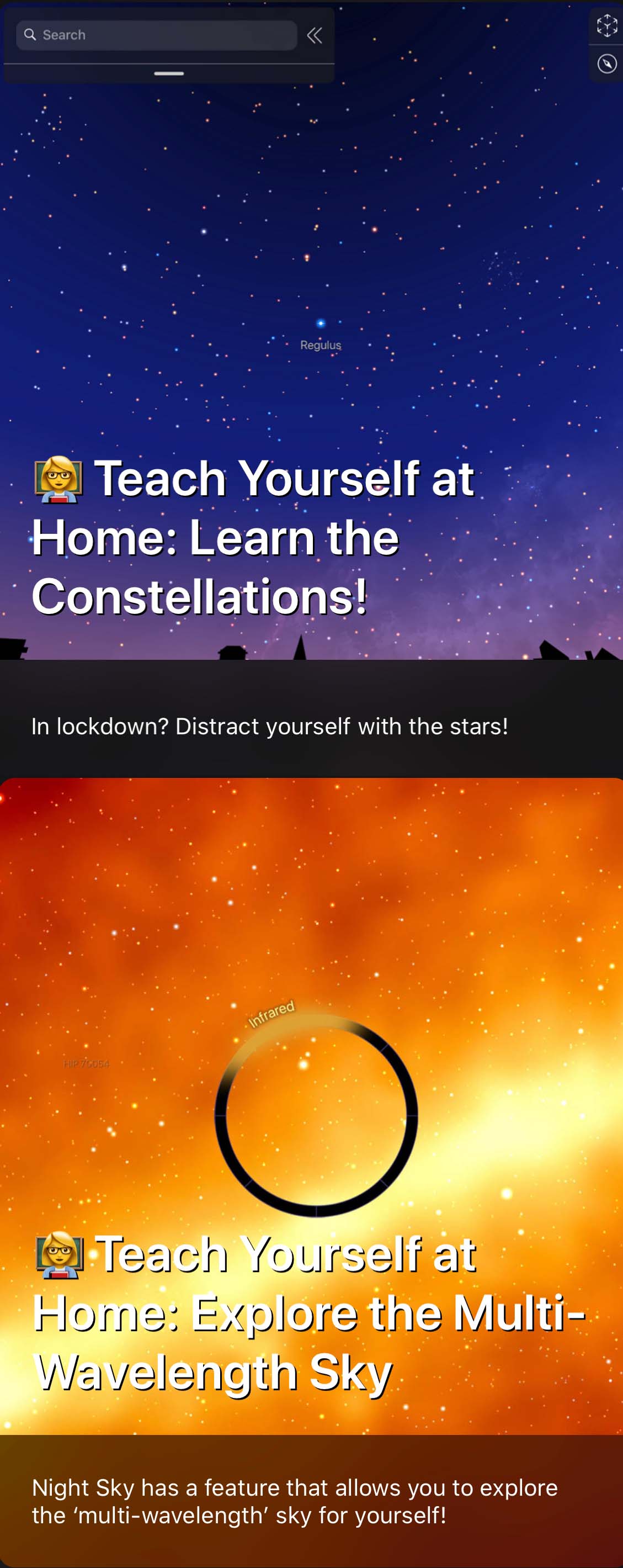
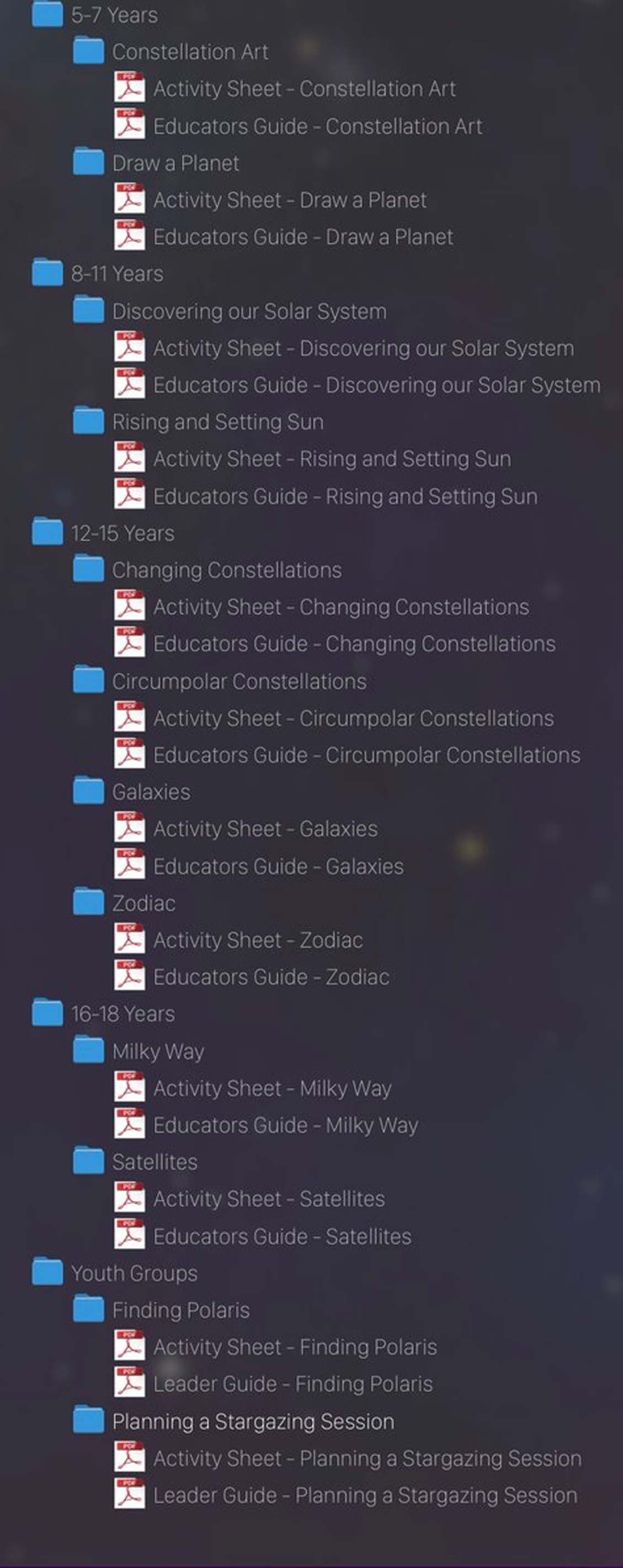
Night Sky 8 (2020)
Night Sky 8 drastically added depth and detail to the Sky View by over 10X compared to Night Sky 7. We added 1.7 billion stars which presented a massive technical challenge for us. We did this by adding the GAIA database of stars, but to deliver this vast amount of data to a mobile device required overcoming technical challenges on how to manage this much data. We did this by setting up multiple servers that literally stream the stars from the cloud as the user zooms into the depths of space. It wasn’t possible to store this entire database directly on mobile devices, as it would take up too much storage, so this was an innovative way to deliver this data.
We also introduced Starlink string flyover notifications, as users very often liked to see a batch of these satellites pass overhead. Additionally we added new widgets introduced in iOS 14, a new Night Sky Watch face. We also enabled Family Sharing meaning multiple members of the same family can all enjoy Night Sky Premium with just one subscription.
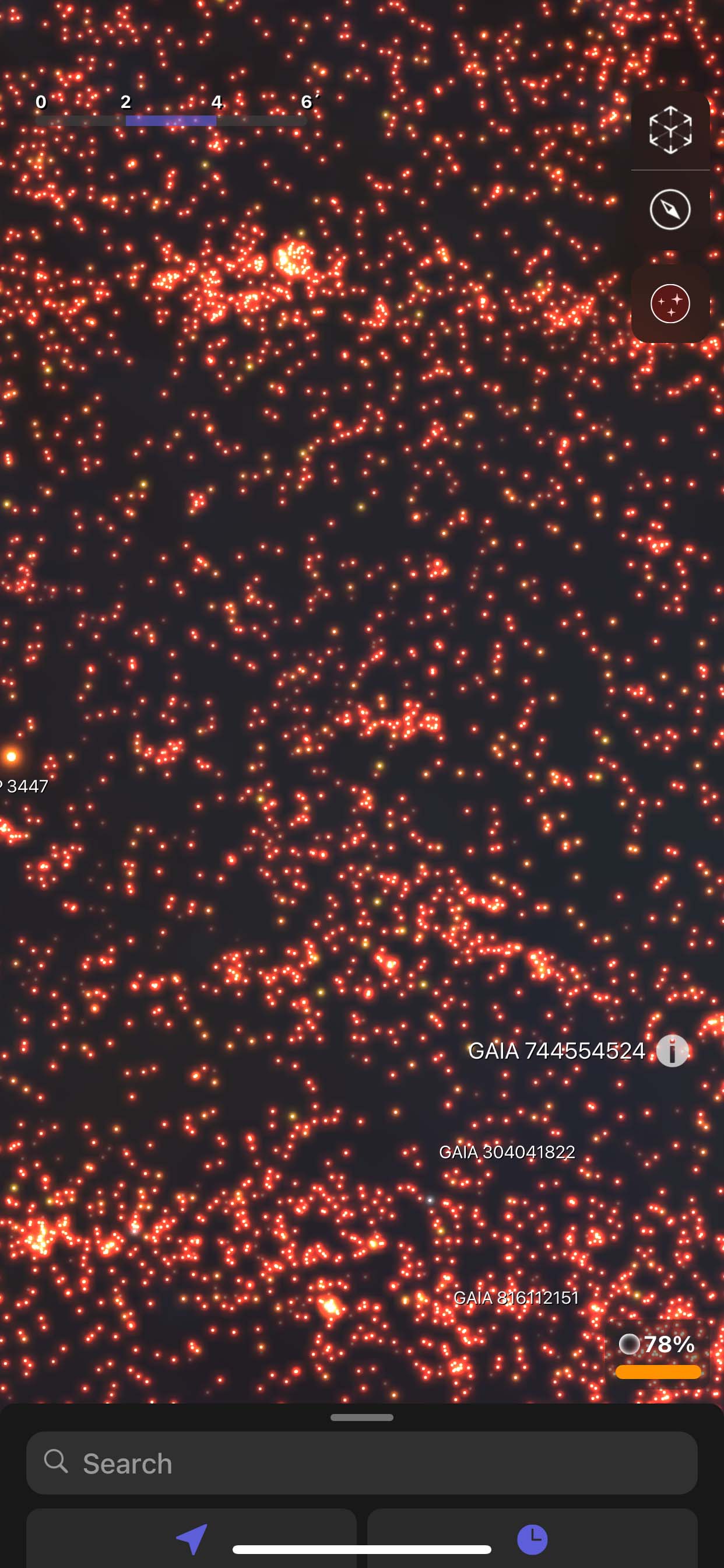

Why no Night Sky 9?
After Night Sky 8 we started development on Night Sky X (version 10). We decided to miss Night Sky version 9 because we wanted to align the Night Sky version number releases with the 10th anniversary of Night Sky launching. Back after the launch of Night Sky 1, there was an 18 month pause in major releases that always kept the version number a year behind the anniversary, so we thought what better time to correct this than Night Sky’s decade celebrations by jumping to version 10.0!
Night Sky X (2021)
Night Sky X was the first version of Night Sky since Night Sky 4 to be released with the version number in the name. This was done as a way to celebrate the decade of development to what has become the most popular astronomy app in the world.
Night Sky X introduced some major firsts never seen before including Sky Tags, and a new Connected Stargazing experience made possible thanks to SharePlay in iOS 15.
Sky Tags were inspired by pins in maps, and they essentially allow the user to tag any object they can see in the sky, or any sky co-ordinates. This makes Night Sky extremely customizable and personal, allowing you to tag objects such as favorite stars, planets, observation planning, or memorials to someone. Sky Tags are then synced via iCloud to Night Sky on tvOS and macOS. We even made it so users can share Sky Tags like you can with pins in Maps, and so others can find your Sky Tag.

Connected Stargazing was another first in Night Sky X, allowing a group of people on a FaceTime call to start finding objects together even when they are apart. This was a complex implementation behind the scenes to make it appear seamless for users. Night Sky intelligently knows if some users may not be able to see an object due to location and will inform other users in the session. It also allows users to skip objects during a session if they are obscured by cloud for instance.
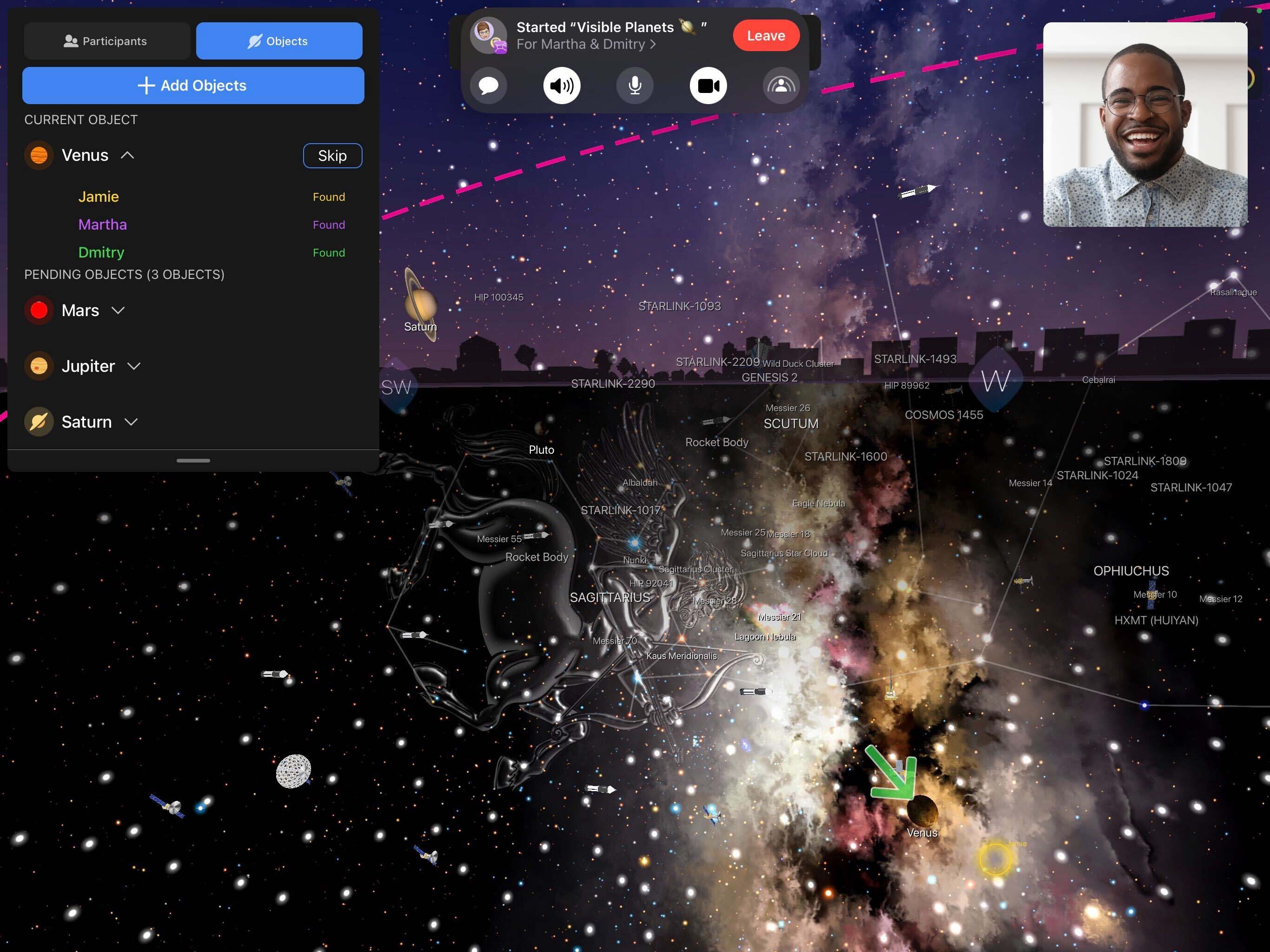
We also included an intro video for Night Sky X that was inspired by the macOS Leopard start up welcome screen from 2007, that was of the word ‘Welcome’ appearing in multiple languages flying out of the Night Sky. This was around the time when my app development hobby was starting, so I naturally wanted to include something that paid homage to this time, and this was my way of doing that. You can see below this on the intro to the Night Sky X ad’s.
Reflecting and The Future
Night Sky’s 10th birthday has given me an opportunity to reflect on the feature developments over the years and I think it becomes clear how each layer of development has paved the way to more advanced features further down the line.
Whether it be the addition of 60 million stars, paving the way to 1.7 billion stars which then paved the way to Sky Tags…, or the original sky view in Night Sky 1 paving the way to more detailed 2D artwork in Night Sky 2, to 3D Glass Constellations in Night Sky 4.., you can see how every element layers advanced technologies acting as foundations to new features throughout each iteration.
Our team has never been stronger, and the passion and drive that has existed at the heart of the development hasn’t wavered. As a result we continue to take advantage of new technologies and create more immersive and awe inspiring experiences.
On a more personal level, Night Sky has become much bigger than just a small team developing an app for our own passions. As the app has become more and more popular throughout the years, so has our sense of responsibility, and also our sense of having a meaningful impact on the world through our work. We have a great responsibility to make sure the app works, is accurate, and hopefully as a result inspires others through education.
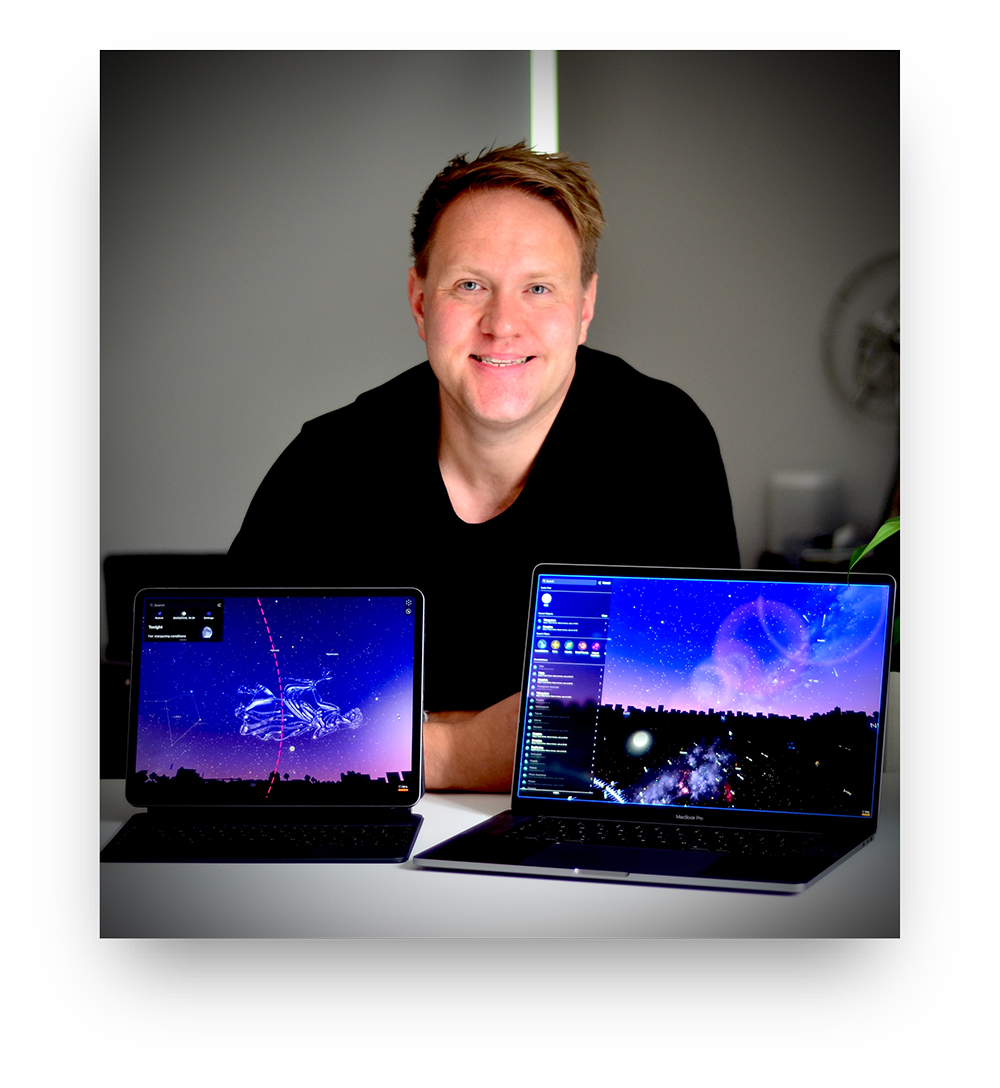
Night Sky is launched on average 8 times every second all around the globe, and every one of those launches represents an educational experience. For me it has, and continues to be, a great honour to have found myself in a position where we have created an app that inspires others, and who knows where that inspiration may lead in the future.
Thank you for being a user, and thank you for taking the time to share in this reflection.
Here’s to the next decade…
Happy stargazing! ⭐️
![]()